 Researchers have created a novel wearable patch to provide an improved treatment experience for people with melanoma. The researchers developed a novel wearable patch with fully miniaturized needles, enabling unobtrusive drug delivery through the skin for the management of skin cancers.
Researchers have created a novel wearable patch to provide an improved treatment experience for people with melanoma. The researchers developed a novel wearable patch with fully miniaturized needles, enabling unobtrusive drug delivery through the skin for the management of skin cancers.
Monday, June 15, 2020
Wearable patch may provide new treatment option for skin cancer
 Researchers have created a novel wearable patch to provide an improved treatment experience for people with melanoma. The researchers developed a novel wearable patch with fully miniaturized needles, enabling unobtrusive drug delivery through the skin for the management of skin cancers.
Researchers have created a novel wearable patch to provide an improved treatment experience for people with melanoma. The researchers developed a novel wearable patch with fully miniaturized needles, enabling unobtrusive drug delivery through the skin for the management of skin cancers.
Melting a crystal topologically
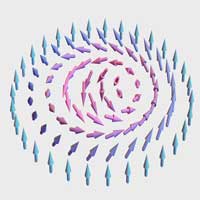 Physicists have successfully melted a very thin crystal of magnetic quasi-particles controllably, as turning ice into water. Novel phases of matter have been discovered and a new model system for fundamental physics studies has been established.
Physicists have successfully melted a very thin crystal of magnetic quasi-particles controllably, as turning ice into water. Novel phases of matter have been discovered and a new model system for fundamental physics studies has been established.
A phase battery for quantum technologies
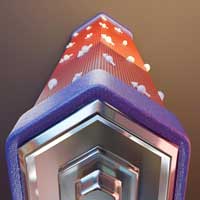 The first quantum phase battery has been realized. It consist of an indium arsenide nanowire in contact with aluminum superconducting leads and is a key element for quantum technologies based on phase coherence.
The first quantum phase battery has been realized. It consist of an indium arsenide nanowire in contact with aluminum superconducting leads and is a key element for quantum technologies based on phase coherence.
With a 'catch-and-release' process, researchers advance graphene electronics
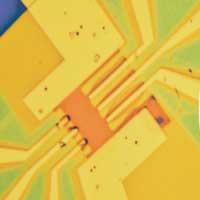 New findings could make fabrication of advanced graphene devices more efficient.
New findings could make fabrication of advanced graphene devices more efficient.
Excitons form superfluid in certain 2D combos
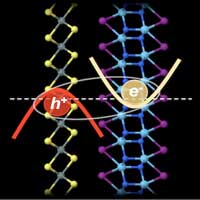 Mixing and matching computational models of 2D materials led scientists to the realization that excitons - quasiparticles that exist when electrons and holes briefly bind - can be manipulated in new and useful ways.
Mixing and matching computational models of 2D materials led scientists to the realization that excitons - quasiparticles that exist when electrons and holes briefly bind - can be manipulated in new and useful ways.
New supelens has potential to circumvent classical optics laws
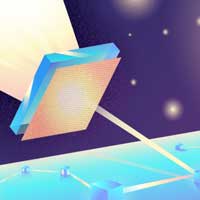 Researchers have made a first-ever experimental observation of a plasmon nanojet. This physical phenomenon enables nanoscale focusing of light and, theoretically, allows engineers to bypass one of the fundamental limitations of the ordinary converging lens.
Researchers have made a first-ever experimental observation of a plasmon nanojet. This physical phenomenon enables nanoscale focusing of light and, theoretically, allows engineers to bypass one of the fundamental limitations of the ordinary converging lens.
Discovery of graphene switch
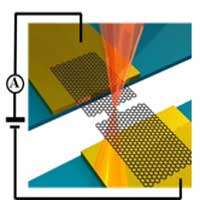 Scientists have successfully measured the current-voltage curve of graphene nanoribbons that were suspended between two electrodes.
Scientists have successfully measured the current-voltage curve of graphene nanoribbons that were suspended between two electrodes.
Newly observed phenomenon could lead to new quantum devices
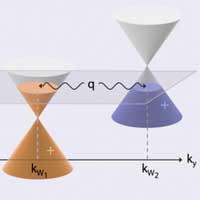 Exotic states called Kohn anomalies could offer clues to why some materials have the electronic properties they do.
Exotic states called Kohn anomalies could offer clues to why some materials have the electronic properties they do.
Printed perovskite LEDs - an innovative technique towards a new standard process of electronics manufacturing
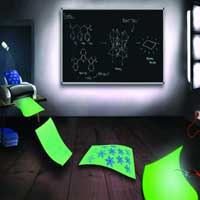 Researchers have succeeded for the first time in producing light-emitting diodes (LEDs) from a hybrid perovskite semiconductor material using inkjet printing.This opens the door to broad application of these materials in manufacturing many different kinds of electronic components.
Researchers have succeeded for the first time in producing light-emitting diodes (LEDs) from a hybrid perovskite semiconductor material using inkjet printing.This opens the door to broad application of these materials in manufacturing many different kinds of electronic components.
Three research groups, two kinds of electronic properties, one material
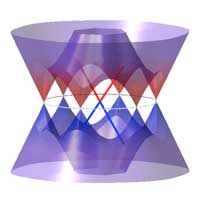 Combining materials science, experimental and theoretical physics, a long-term study paves the way to new designed materials with multiple electrical functionalities.
Combining materials science, experimental and theoretical physics, a long-term study paves the way to new designed materials with multiple electrical functionalities.
Dirac electrons come back to life in magic-angle graphene
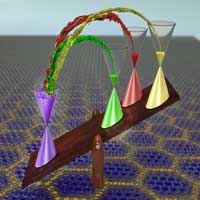 A new symmetry-broken parent state discovered in twisted bilayer graphene.
A new symmetry-broken parent state discovered in twisted bilayer graphene.
Subscribe to:
Comments (Atom)
